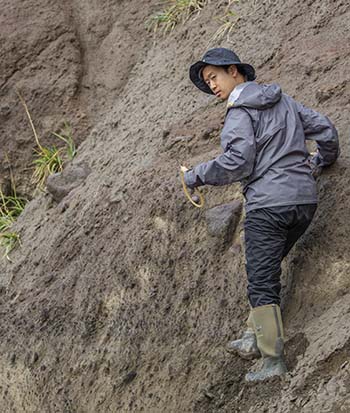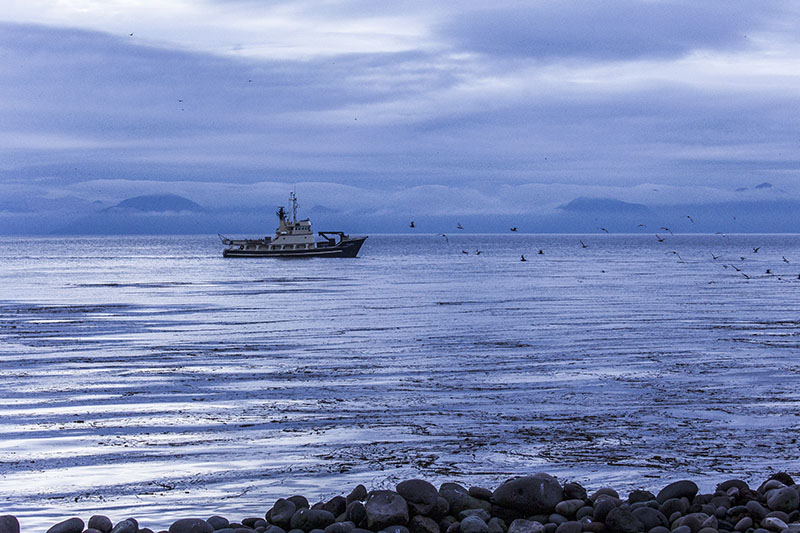The research vessel R/V TiglaxThey were at sea for four days but had only one on Kasatochi, so they worked quickly, setting out simple traps for insects (ethanol preservative fluid in plastic cups) and “prying apart driftwood and any crevice that insects could potentially be hiding in.” They used forceps, suction cups and butterfly nets to capture their quarry of arthropods, logging the GPS coordinates of where they found each specimen.
They also made landfall on Koniuji Island, whose treacherous shoreline, isolated location, thick fog and rough waters normally keep visitors away. “On that day the water was calm,” Chen says, “and we were able to take a skiff to get close enough to jump off and wade toward shore.”
Chen nurtured his interest in biogeography—the placement of life in time and geographic space—through study-abroad experiences, starting with an interterm trip to Costa Rica as part of Professor Ethan Clotfelter’s Amherst seminar on tropical biology. Chen returned to the Central American rain forest for an internship. Next, home base for half a summer was an island in the Solomon Islands the size of a football field. From there, he joined a biodiversity survey on Tetepare, the largest uninhabited island in the tropics. Then he made the unconventional decision to spend one semester of his senior year on a traditional European sailing vessel retracing part of Capt. James Cook’s 18th-century exploration of the South Pacific and Darwin’s 19th-century voyage.
Where is this all leading? “That’s something I haven’t quite figured out yet,” Chen says. “I think there is a lot of merit in being a scientist and being able to go places that are effectively blocked off to tourists.” He is also attracted to journalism. “Ideally, I’ll do a hybrid of both, because scientists generate information but then somebody needs to translate that into something for the public to be interested in.”
For now, he is at home in Wellesley, Mass., and looking to visit other far-flung places: “There’s a building list in my head of areas that I encounter in the literature. There is always some mention of an obscure island next to Madagascar or some place south of New Zealand.” In the South Pacific, he notes, there are on the order of 25,000 islands, many of which have yet to be studied in any detail. “I have a penchant for exploration. There are still some places that have escaped the direct touch of man, and those are the areas that are of interest to people like me.”


